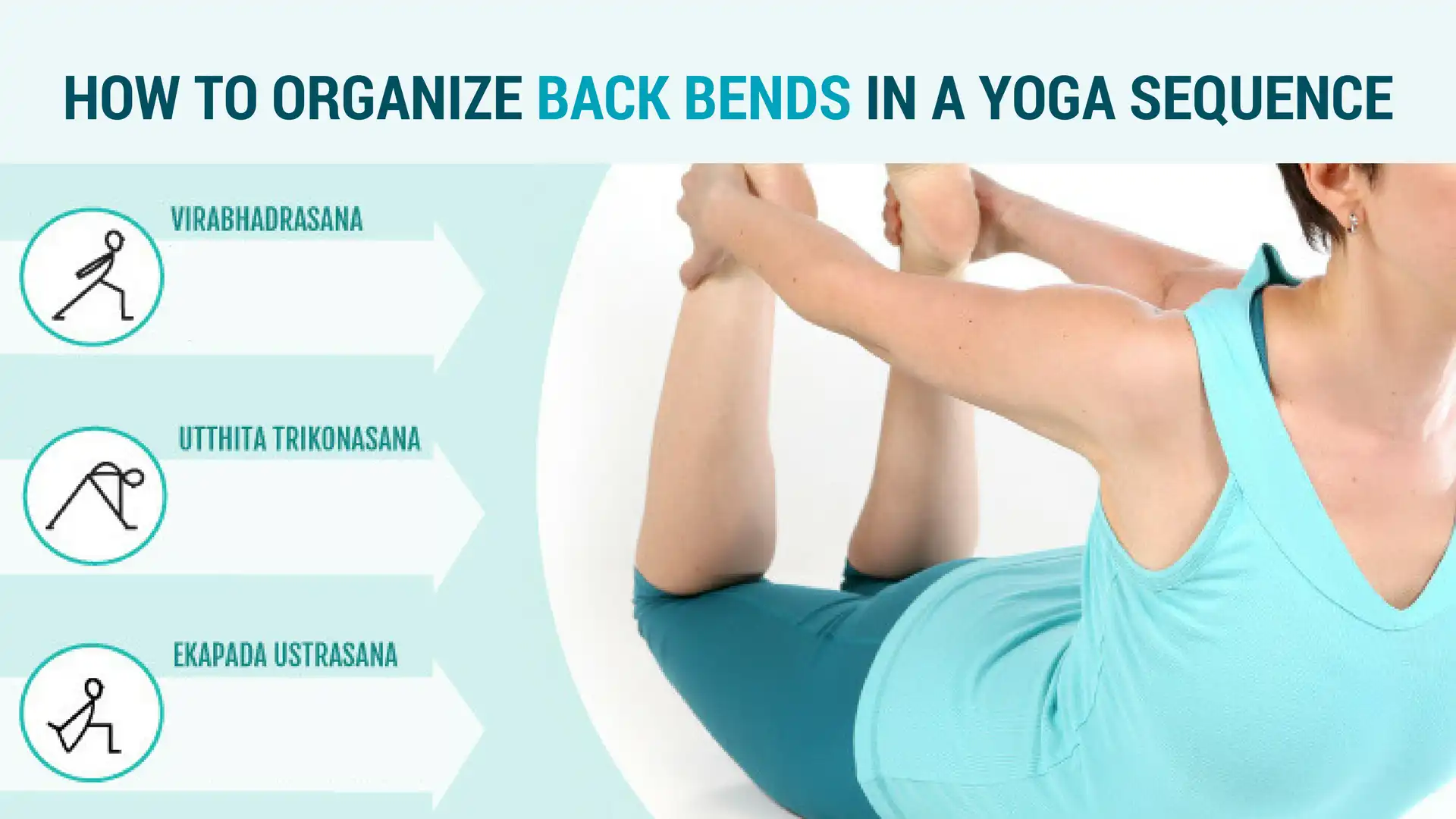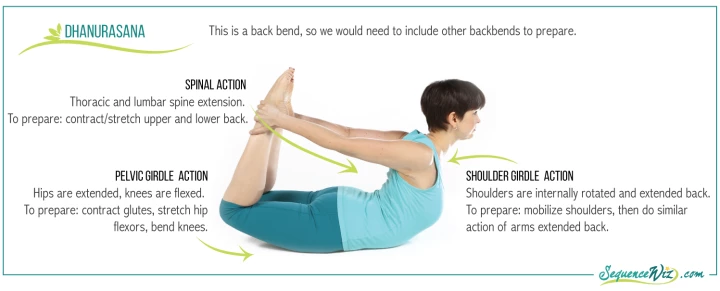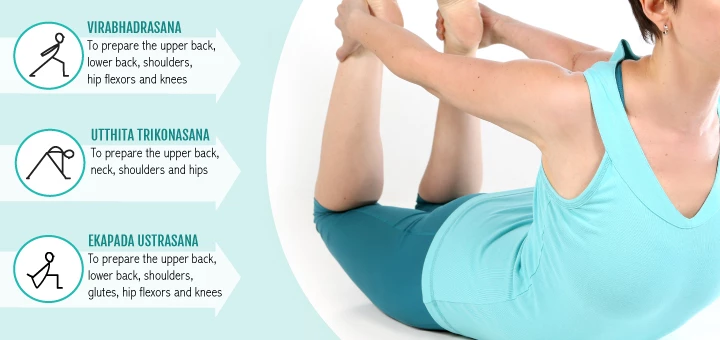Healthy Backbending: How to Organize Backbends in a Yoga Sequence

Article At A Glance
Healthy Backbends are an integral part of yoga practice, but knowing how to practice healthy backbending is an essential part of teaching these poses. Included are 4 key components to building safe and rewarding backbending yoga sequences.
A number of years ago, a friend of mine went to a new yoga class. At one point, they did Ustrasana (Camel Pose), and my friend couldn’t quite reach her heels. She was content keeping her hands on her back until the yoga teacher appeared beside her and began cheering, “You are almost there. Reach, reach, reach!” My friend did reach her heels to the excited clapping of the teacher and injured her back. She was out of commission for months.
At the risk of sounding like a broken record, I will say it again: achieving the deepest form of posture is not a goal in yoga. And even though we do need to challenge ourselves physically and otherwise to facilitate growth, we need to do so responsibly.
Many teachers seem to believe that the risks of a backbend are minimized if the body is positioned properly in the posture. This is certainly true, but this is not enough. Some other points that are essential in making the backbends safer include:
- Building gradual progression of intensity (both in the space of one class and long-term)
- Limiting the number of backbends within one practice
- Using stabilizing postures
- Including adequate compensation
Let’s explore these points.
1. Healthy Backbending and Gradual Progression
This means building the intensity gradually toward the peak, where the following posture is a bit more challenging than the one before it. If you have a certain pose in mind that you would like to work toward, you need to analyze the pose first on the level of skeletal structure—joint positions and muscle actions—to see which parts of the body require preparation. We usually start from the spine, then move to the shoulder/pelvic girdle, then out to the extremities. For example:

Then we can select some Core poses that would help us get there, for example:


Notice how the choice of the arm positions imitates the arm position in the goal posture. This is also part of the preparation process. Of course, we wouldn’t do those poses back-to-back; we would need to compensate for them in the course of the practice.
2. Limit the Number of Backbends
I’ve been to yoga classes where the teacher seemed to include every backbend possible. More is not better. For people who are already extra bendy, too many backbends will only destabilize the structure, making it more vulnerable. For those people who do not have a lot of spinal flexibility, it will be too much since their bodies are not used to this sort of movement. That’s an injury waiting to happen. Generally, I wouldn’t recommend doing more than 4-5 backbends within a practice.
3. Healthy Backbending and Stabilizing Postures
Take care of the lower back and sacrum. This is such an important role that backbends play, yet it frequently goes overlooked. When we do all those fancy standing postures—backbends, side bends, twists—we pull the spine and sacrum in every direction while keeping the pelvis relatively stable. The potential of torquing or destabilizing the SI joints is high. So afterward we need to stabilize the relationship between the sacrum and pelvis by doing some sort of symmetrical, prone backbends; Salabhasana (Locust Pose) works great, as well as certain variations of Bhujangasana (Cobra Pose).

4. Include Adequate Compensation for Backbending
Is essential in bringing the body back to a state of balance. We don’t bend back very often in our daily lives, so for many people, this is a foreign and intense movement that needs to be neutralized. Often several poses are necessary to compensate for a deep backbend. In the example of Dhanurasana (Bow Pose), we might need a couple of forward bends to stretch the back, an axial extension posture to mobilize the hips and shoulders, and a twist to realign the shoulder and pelvic girdles.

Backbends play two very different distinctive roles in any yoga sequence: some increase the range of motion of the spine, and others stabilize the lower back and sacrum. That’s why it matters how we distribute them throughout the yoga practice.
Also, read...
Teaching Svadhyaya: 3 Ways to Encourage Self-Study in Yoga
In Celebration of Gray-Haired Yoga – Busting the Myth of the Yoga Body
Related courses

Educated as a school teacher, Olga Kabel has been teaching yoga for over 14 years. She completed multiple Yoga Teacher Training Programs but discovered the strongest connection to the Krishnamacharya/ T.K.V. Desikachar lineage. She had studied with Gary Kraftsow and American Viniyoga Institute (2004-2006) and received her Viniyoga Teacher diploma in July 2006, becoming an AVI-certified Yoga Therapist in April 2011. Olga is a founder and managing director of Sequence Wiz— a web-based yoga sequence builder that assists yoga teachers and yoga therapists in creating and organizing yoga practices. It also features simple, informational articles on how to sequence yoga practices for maximum effectiveness. Olga strongly believes in the healing power of this ancient discipline on every level: physical, psychological, and spiritual. She strives to make yoga practices accessible to students of any age, physical ability, and medical history, specializing in helping her students relieve muscle aches and pains, manage stress and anxiety, and develop mental focus.



